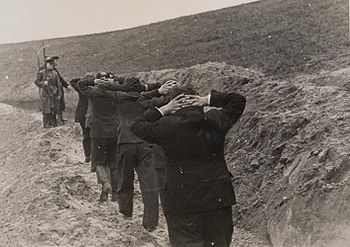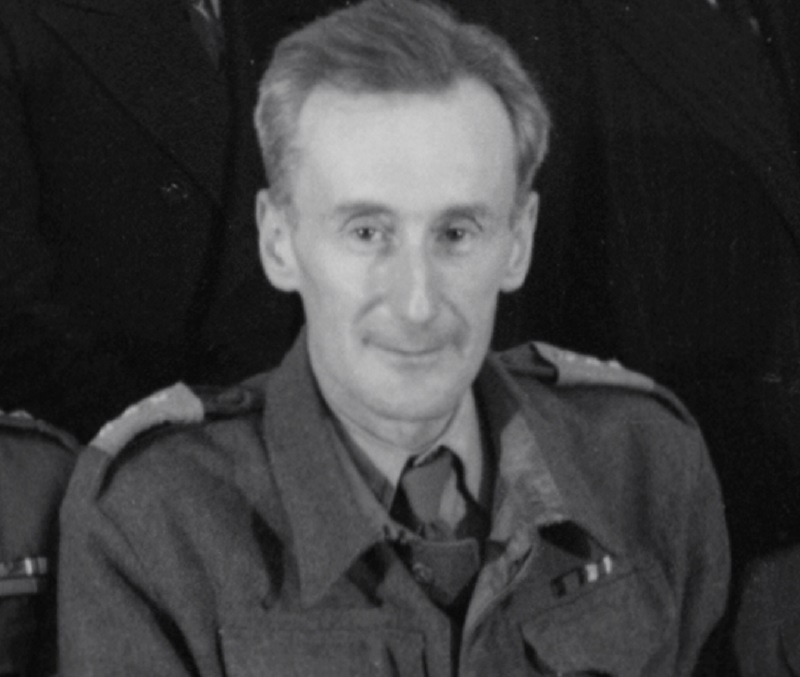The terrible price of Poles’ resistance during World War II
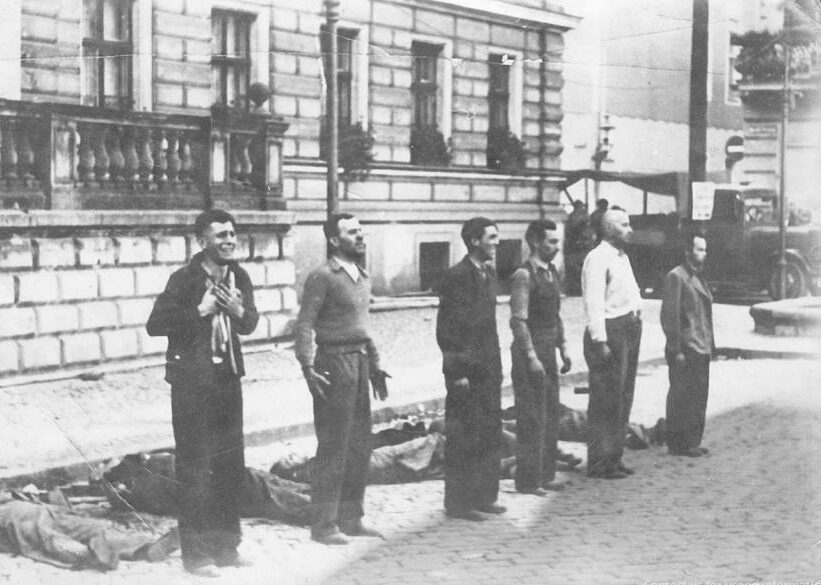
No country of the anti-Hitler coalition paid such a high price for resisting the Third German Reich as Poland did.
Maciej Rosalak
In no other conquered country in Europe were such crimes perpetrated by two occupiers together as well as separately, including through the extermination of its elites. The mass shootings of Poles in the Kampinos Forest near German-occupied Warsaw were taking place at the same time as Polish officers were being executed in Katyn.
But Nazi Germany’s largest genocidal plans were developed during the following year, in 1941. In German eyes, success on the front lines of the war against the USSR seemed to be the crowning achievement of their conquest of Europe. It enabled them both to develop their “living space” (German: Lebensraum) in the east and to eliminate the “Jewish question” (Judenfrage). At the core of both plans was the belief in the Germans’ racial superiority, giving them the full right to murder at least 100 million people: Slavs and Jews, for whom they harbored hatred and contempt.
The General Plan East (German: Generalplan Ost) was to provide them with Lebensraum at the expense of the nations east of the Third Reich’s borders up to the Urals, and from Lake Ladoga in the north to the Black Sea in the south. All Jews, 80–85 percent of Poles, 50 percent of Czechs, 65 percent of Ukrainians, 75 percent of Belarusians, and an unspecified portion of Russians and Tatars were to be removed from that territory (read: lose their lives outright or in Siberia).
A second plan provided for the extermination of all Jews. It was to be once and for all the “Final Solution to the Jewish Question” (German: Endlösung der Judenfrage). The mass executions of hundreds of thousands of Jews in the conquered territories of the Soviet Union, carried out as early as the summer of 1941, stripped away any remaining illusions about the true intentions of the Nazis. Circumstantial evidence suggests that the Holocaust was approved at a meeting in Wannsee in January 1942.
The General Plan East had been formulated six months earlier, but due to the larger scale of that project, implementation had been postponed until “after the war.” Under that plan, from 3 to 4.8 million Polish slaves were to be left alive. The SS tested it in late 1942, when they displaced 110,000 Polish peasants from 193 villages in the Zamojszczyzna region, which is famous for its fertile lands. Some were sent to work in Germany, some were expelled to Mazovia, about 1,300 were taken to Auschwitz (where one in five survived), whereas young children with “Aryan racial characteristics” were abducted to the Reich. German colonists were brought in to take their place. Only armed resistance by Polish partisans interrupted this operation.
Germany’s special plans for the intellectual elites
People coming from Western Europe are not even aware of the difference between the German presence in their territories and the dual occupation of Polish land, which was exceptionally genocidal in nature. In France, Belgium, the Netherlands, Norway or Denmark, but also in the Czech lands, Hungary and Romania, there were some forms of national governments and armed forces, and sometimes even groups of volunteers serving in Waffen SS units. In those countries there were no systematic roundups and mass executions, nor were draconian laws enacted to threaten locals with death for the smallest transgression. Not so many thousands of citizens perished in concentration camps, and not so many young people were deported for forced labor to the Reich as was the case in Poland. More than 7,500 Poles were sent to Auschwitz in the first two transports alone, in 1940.
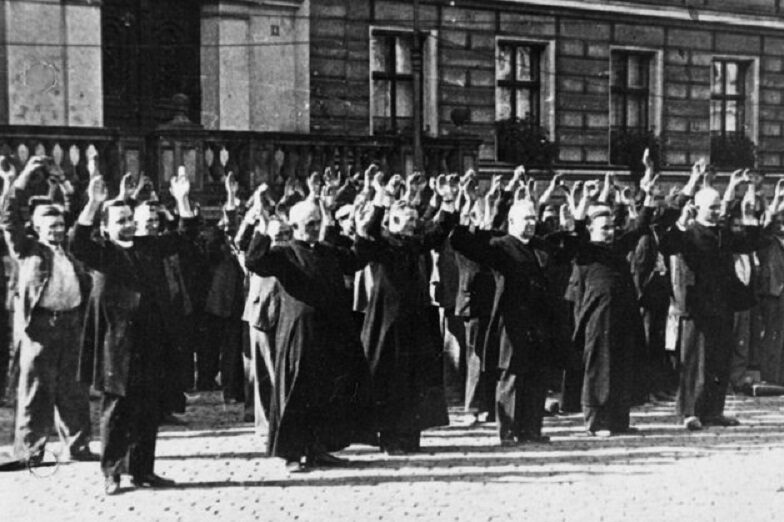
During World War II, the Germans primarily murdered those who they considered the Polish elite. They started during the first days of the invasion in September 1939. The slaughter of Poles was carried out in cities and towns throughout Poland, mainly by six murderous Einsatzgruppen SS advancing with Wehrmacht units in an operation called Tannenberg. The Wehrmacht also killed defenseless civilians, as it did for example in Kłeck near Gniezno, and assisted the German police, SS, and Gestapo. Selbstschutz units made up of local Germans and Volksdeutsche murdered Polish civilians too.
In the second half of October 1939, Pomerania (together with Powiśle), Greater Poland, Silesia, northern Mazovia, and Lodz were incorporated into the Third Reich. There were 10 million people living in these areas before the war, including 9 million Poles. Germans accounted for fewer than 10 percent. Together with the looting of Polish lands, the German administrative authorities took over supervision of their “security.” The actions taken were rooted in plans for the German invasion of Poland, drawn up as early as the signing of the German–Polish declaration of non-aggression in 1934. The annexation plans provided for the elimination of the Polish elites in those territories.
Among other things, this resulted in the drafting and printing by the SD (SS security service), in the summer of 1939, of a “Special Prosecution Book for Poland” (German: “Sonderfahnungsbuch Polen”). It was an alphabetical list of more than 61,000 Poles who had rendered service to their homeland and were therefore deemed dangerous to the Third Reich. The list included government officials, local government leaders, landowners and entrepreneurs, scholars and teachers, officers, lawyers, activists of social organizations, priests, monks and nuns, scouts, and veterans of the struggle for a free Poland. Those who had been “overlooked” were eagerly added after the German invasion, with the help of local Germans, many of whom thus settled personal scores and seized the property of captured Poles.
The lists of wanted Poles were death lists. Up to April 1940, as part of the Intelligenzaktion, those captured were either murdered (50,000, in places like the forests near Piasnica) or sent to concentration camps (another 50,000). A camp in Stutthof was built specifically for this purpose. They were also sent to Hohenbruch and Mauthausen-Gusen. In the vast majority of cases, this meant death. Nearly 100,000 representatives of our nation’s elite were murdered in this way in the regions of Greater Poland, Pomerania, Silesia, Lodz, and northern Mazovia. In addition to the murdered elites, several hundred thousand Poles were sent to do forced labor in Germany, and by the end of 1939 nearly two hundred thousand had been expelled to the General Government. Their property was plundered. By the end of 1940, the number of Polish expellees to the General Government exceeded a quarter of a million.

In addition to killings during military action and retaliatory executions such as those in Wawer near Warsaw, the Germans organized special Sonderaktion operations in the General Government that were similar to the Intelligenzaktion. These were two Sonderaktion Krakau operations, when, among other actions, professors from the Jagiellonian University were arrested and sent to concentration camps, as well as Sonderaktion Lublin, whose victims were mainly clergymen and professors from the Catholic University of Lublin, and Sonderaktion Tschenstochau. In November 1939, after carpenter Georg Elser’s failed assassination attempt on Hitler in Munich (which the Poles had absolutely nothing to do with), the Germans staged Sonderaktion Bürgerbraukeller, during which several hundred intellectuals were arrested throughout the General Government. Any excuse was good enough…
During the warfare and occupation years, especially during anti-partisan operations, some 800 Polish villages were burned down and their inhabitants executed. Terror in the cities – and especially in Warsaw – meant that when people left their homes in the morning, they did not know if they would return alive.
During the Warsaw Uprising, 10,000 Home Army soldiers died and 6,000 were declared missing (which generally meant they had been killed too). About 20,000 insurgents were wounded, including 5,000 seriously. Nearly 15,000 soldiers were taken prisoner. Meanwhile, the lives of 200,000 residents were lost. I was told by my late parents, who survived the slaughter in the Wola district of Warsaw, how the Germans drove Varsovians with their children in front of tanks and burned them alive. They murdered and raped women… No one will ever count how many victims there were in the slaughter of Wola: 30, 40, or maybe 50 thousand. There were 20 execution sites on Wolska Street alone. Here are some of them: St. Lazarus Hospital (700 people murdered), Franaszek Factory (3,000), Ursus factory (5,000), Hankiewicz Houses (2,000). They killed the sick and doctors, orphanage children, scouts, priests, and nuns. There was no mercy either for pregnant women.
Stalin like Hitler
Cruel annihilation also befell the Polish elites at the hands of the Soviets. They were murdered from the beginning of the Red Army’s invasion on September 17, 1939, with officers and landowners being targeted in particular. They were arrested according to criteria similar to those of the Germans, sent to camps, condemned to deadly exile in Kazakhstan and Siberia, or murdered during the Katyn genocide. The similarity in purpose, methods, and timing is striking.
After treacherously stabbing Poland in the back in 1939, the Soviets held nearly 170,000 interned soldiers in labor camps. According to the NKVD’s transport lists, the Bolshevik occupiers deported more than 350,000 people in three mass deportations, but it can be said with a high degree of probability that the number of repressed Poles was three times that. At the same time, they executed defenseless interned prisoners of war on a massive scale. There was, of course, the Katyn massacre, carried out by virtue of a decision (dated March 5, 1940) of the seven highest-ranking dignitaries in the hierarchy of the Soviet state, starting with Stalin himself.
In Katyn, 4,410 POWs from Kozielsk were murdered. Among those who lost their lives there were Rear Admiral Xawery Czernicki, Generals Bronislaw Bohatyrewicz, Henryk Minkiewicz, and Mieczyslaw Smorawinski, as well as the Chief Orthodox Chaplain of the Polish Army, Lt. Col. Szymon Federońko, the Chief Rabbi of the Polish Army, Major Baruch Steinberg, and one woman, Lt. Pilot Janina Lewandowska. In Kharkov, 3,739 internees were murdered at Starobielsk, including eight generals: Leon Billewicz, Stanislaw Haller, Aleksander Kowalewski, Kazimierz Orlik-Lukoski, Konstanty Plisowski, Franciszek Sikorski, Leonard Skierski, and Piotr Skuratowicz. In Tver, 6,314 prisoners of war from Ostashkov were murdered, primarily State Police and Prison Service officers.
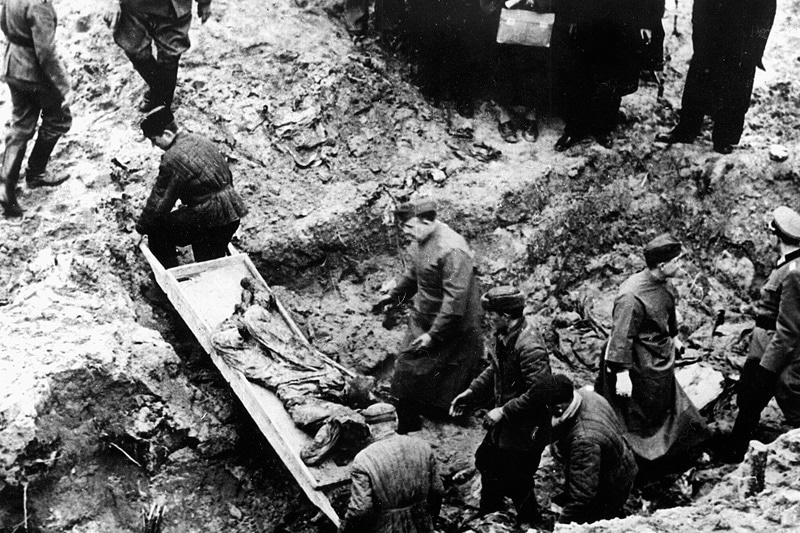
Additionally to this, on March 22, People’s Commissar for Internal Affairs Lavrentiy Beria ordered the “unloading” of prisons. The bloody operation lasted two months and claimed the lives of no fewer than 7,305 Poles. Those on the so-called Ukrainian list are known, as it was handed over to Polish prosecutors in 1994. It contains the names of 3,435 Polish citizens. Among them are 726 officers of the Polish Army (including seven generals), 770 police officers, and 28 prison officers. We know that there were 3,870 names on the so-called Belarusian list, but we do not know the details because the list itself has either disappeared or is in the archives of the Russian or Belarusian security services. We also do not know what happened to a similar number of Polish citizens who probably fell victim to criminal ethnic cleansing in other areas of this “inhuman land.”
When the Soviets were attacked by their former ally on June 22, 1941, they mass-murdered political prisoners in prisons and on death marches as they drove their unfortunate prisoners to the east. Historians have determined that about 50,000 prisoners were killed. In the eastern part of pre-war Poland, red partisans joined in April 1943 in an open fight against the Polish Home Army, and after the Red Army returned to Polish territory in 1944, some 50,000 Home Army soldiers were imprisoned and deported to the east. This was another painful loss of the nation’s most valuable substance…
The Germans and Soviets largely slaughtered the Polish elites in both major cities and local communities. A third of people with university degrees in 1939 were killed. Nearly 60% of lawyers, more than half of doctors and every third university teacher shared that fate. 2,804 Roman Catholic bishops, priests, friars, and nuns also lost their lives, while 3,563 survived concentration camps and prisons. Of the 10,017 diocesan priests in Poland, about 20 percent died. One in five.
The legitimate Polish authorities never capitulated or collaborated with Hitler, either politically or militarily. A terrible price, proportionally higher than in any other country in the anti-Hitler coalition, was paid for this commitment to freedom and independence. The number of Polish citizens who lost their lives is estimated at 6 million!
Balance of losses
The irreparable human losses were accompanied by colossal material damage. Attempts to estimate it in the 1990s did not yield satisfactory results, and the report of the parliamentary team established in 2017 under the leadership of MP Arkadiusz Mularczyk was only published in 2022.
However, as early as 1947, the Office of War Compensation established by the Presidium of the Council of Ministers published a comprehensive report on war losses. It took into account the war damage, plunder, and ruthless economic exploitation carried out by the Germans.
Here are some figures from that report: The nation’s assets were reduced by 38 percent compared to pre-1939 levels. More than 160,000 residential houses and more than 350,000 rural homesteads, 14,000 industrial plants, nearly 200,000 stores, 85,000 craft workshops, and nearly 970,000 households were destroyed. Warsaw alone lost 700,000 residents, more than 90 percent of its factories, and more than 70 percent of its residential buildings. Only 10 percent of the capital’s historic monuments survived the war.
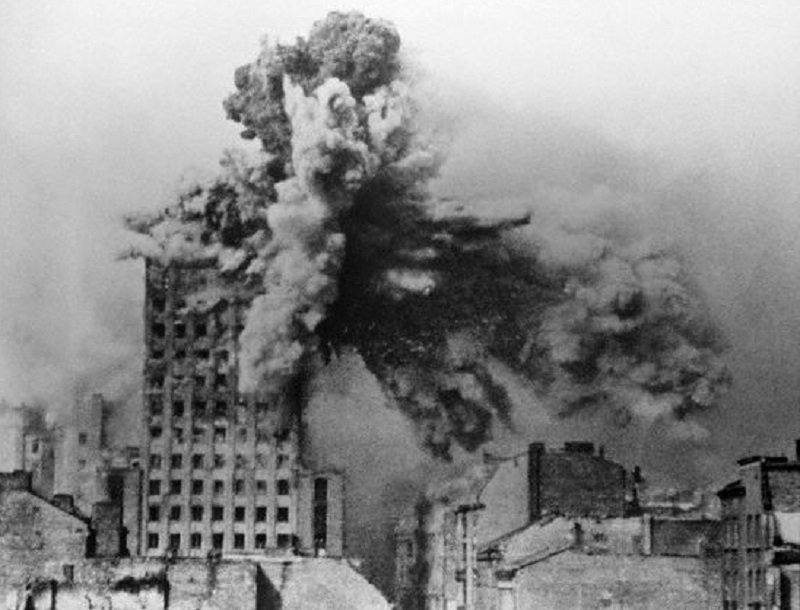
The invaders deliberately destroyed our cultural, scientific, educational, and medical assets. Library collections declined by 22 million books, or two-thirds. Over half a million individual works of art worth more than $11 billion (at 2001 exchange rates) were looted. Seventeen colleges, more than 270 high schools, and more than 5,500 elementary and other schools were destroyed. More than 350 hospitals and nearly 30 tuberculosis sanatoriums were lost. Numerous health facilities and health centers, outpatient clinics and doctors’ and dentists’ offices were also ruined.
Deliberate destruction and looting caused the loss of more than half of industrial production potential (the chemical industry suffered the most with nearly 65 percent of its potential lost). 400,000 hectares of forest were lost, as well as 1.9 million horses, 3.9 million head of cattle, nearly 5 million pigs, 2,465 locomotives and nearly 90,000 wagons, alongside 25 seaworthy vessels. The fighting in 1945 and deliberate destruction by the Germans left the port of Gdynia in ruins. Nearly 5,000 km of railroad tracks, 50 km of viaducts, 15,000 km of hard-surfaced roads, and more than 15 km of road bridges were destroyed.
The report’s authors put the total losses at 258 billion pre-war zlotys, the equivalent of $50 billion in 1939 US dollars. Sixty years later, the value of those calculated losses in current US dollars was 650–700 billion. Losses in Warsaw alone were estimated at $45 billion. [The 2022 Report on the Losses Sustained by Poland as a Result of German Aggression and Occupation During the Second World War, 1939–1945, estimates overall losses for Poland at the equivalent of about 1.5 trillion dollars at current value.]
The Polish state has never received compensation for this. On the contrary: we Poles suffered further losses on the “reparations” we were to receive out of the amounts received by the Soviet Union. No one has yet counted the damage the Soviet Union did to us by taking away half of our pre-war territory and giving in return a much smaller territory that was not its own.
“We do not owe anyone anything!” – Polish President Andrzej Duda recently noted emphatically. “It is others who owe us for the losses suffered by Poland during World War II!” Duda was referring to the scandal caused by anti-Polish attacks and brazen, baseless Israeli demands.
Death for a slice of bread
Jews made up 10 percent of the population of the Polish Second Republic before 1939. The Germans set up death camps here because it is where they could find the most victims. Most of the 6 million Jews from almost all of Europe who lost their lives were killed in those camps’ gas chambers. Polish Jews accounted for half of them…
People who accept the lies of Polonophobes, spread with particular vigor for the past quarter century or so, should remember a few basic facts. The Polish Government-in-Exile – legally established under the provisions of the constitution and recognized in the free world – as well as the subordinate authorities of the Underground State in Poland treated aid to Jews as their duty. They financed organizations providing this aid (such as “Żegota”) and informers cooperating with the occupiers were liquidated. Networks of premises were organized that served as hiding places for the wanted; false documents were issued at Polish consulates and by the underground to enable the persecuted to escape or take refuge. Catholic priests and nuns running orphanages provided great help to Jews. It was the Poles who alerted the Allies about the situation of the Jews, especially during the liquidation of the ghettos (starting in the summer of 1942).
In Poland alone, any act of helping Jews, even just giving a Jew a slice of bread, was punished with death by the German occupiers. According to the findings of the Polish Institute of National Remembrance (IPN), published in December 2019, at least 358 Poles lost their lives at the hands of the Germans for this reason.
The man who was Israel’s foreign minister in 2021–2022 repeatedly and shamelessly slandered the Poles, as a people and a state, by accusing them of having been complicit in the extermination of their Jewish brethren. Earlier, Israeli historian Yehuda Bauer proposed studying the Holocaust according to a threefold division: 1. Perpetrators, 2. Victims, 3. Passive witnesses. The Nazis (not the Germans!) were the perpetrators, the Jews were the victims, and the Poles were the ones who passively watched.
This article was published in 2021 in “Do Rzeczy” magazine.

